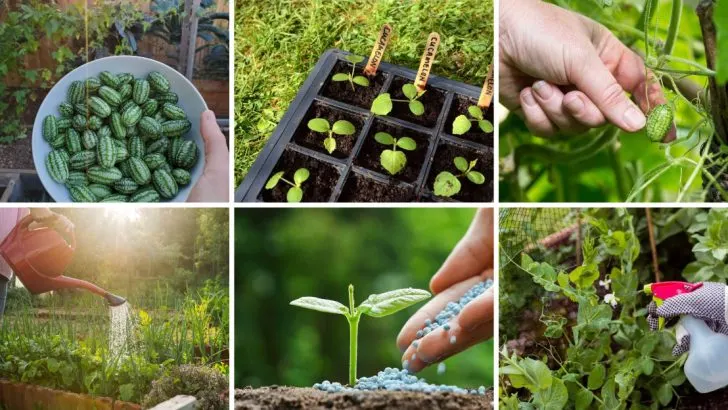If you’ve never heard of cucamelons, you’re in for a treat. These grape-sized fruits look like mini watermelons but have a refreshing taste that’s somewhere between cucumber and lime. They’re surprisingly easy to grow once you get the hang of their preferences, and they’re a fun, quirky addition to any garden or patio setup.
Cucamelons might not be the first thing that comes to mind when you think of homegrown produce, but they’re well worth a spot in your planting plan. They grow on vigorous vines, love warm weather, and tend to be more pest-resistant than traditional cucumbers. Plus, they’re a great conversation starter and make for some seriously snackable garden harvests. Here are 13 practical tips to help you grow your own batch successfully.
Choose the Right Location
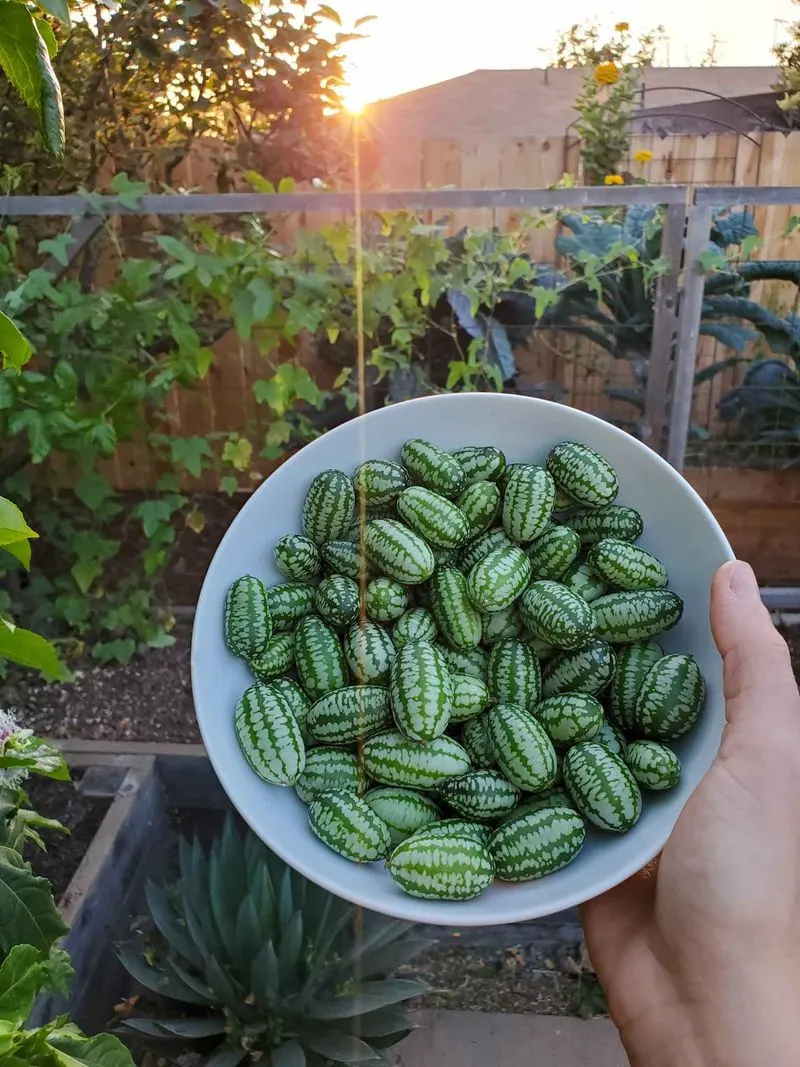
Sunlight is crucial for cucamelons to thrive. Select a location that receives at least 6-8 hours of direct sunlight daily. Well-drained soil is essential as waterlogged conditions can hinder growth.
If your garden has poor drainage, consider raised beds or containers. Ensure the soil is rich in organic matter to provide the nutrients needed.
A good tip is to test the soil pH; cucamelons prefer slightly acidic to neutral pH levels. Preparing the right environment is an essential first step for achieving a bountiful harvest.
Start from Seeds Indoors
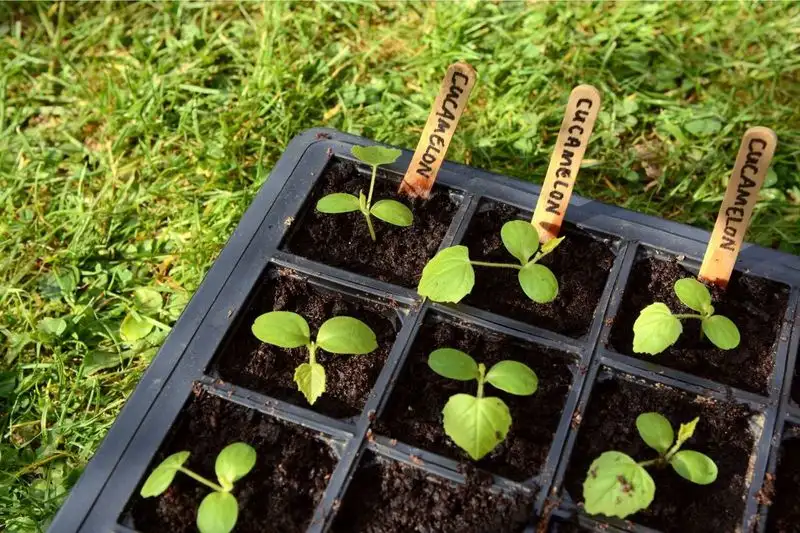
Beginning with seeds gives you control over the growth process. Sow cucamelon seeds indoors about 4-6 weeks before the last frost date.
Use small pots filled with seed-starting mix and place them on a sunny windowsill. Keep the soil consistently moist, but not waterlogged, to encourage germination.
Once seedlings appear, thin them out to prevent overcrowding and ensure they receive adequate light. Transplanting healthy seedlings outdoors when the threat of frost has passed allows for a strong start in the garden.
Use a Trellis for Support
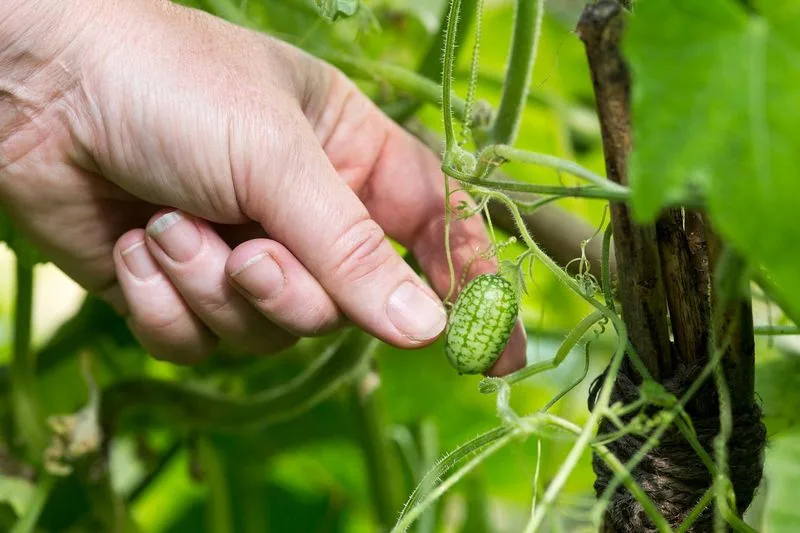
Cucamelons are natural climbers and benefit from support structures. A trellis not only saves space but also keeps the fruits clean and easy to harvest.
Position the trellis close to where you’ll be planting to avoid disturbing the roots later. As the plants grow, guide the vines onto the structure to promote vertical growth.
This method also improves air circulation, reducing the risk of fungal diseases. Employing a trellis is an efficient way to manage space and ensure healthy plant development.
Water Wisely
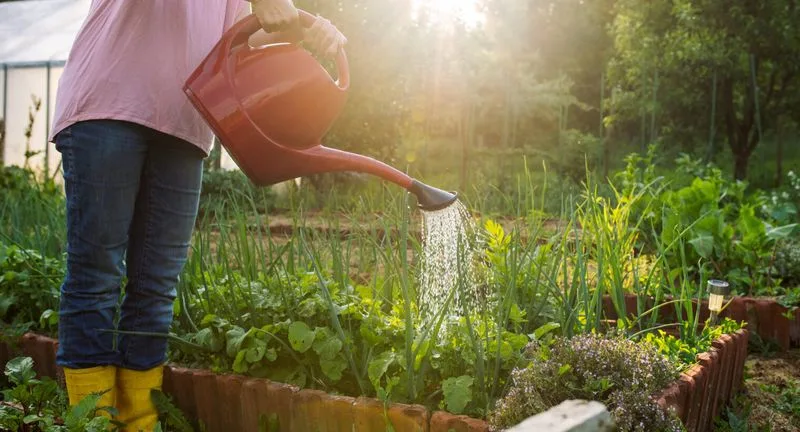
Cucamelons require regular watering, especially during dry spells, but overwatering should be avoided. Water deeply once or twice a week, allowing the soil to dry out slightly between sessions.
Early morning is the best time to water, minimizing evaporation and ensuring plants have moisture throughout hot days.
Mulching around the base can help retain soil moisture and reduce weed competition. Smart watering is key to preventing root rot and promoting robust growth, making this practice critical for healthy cucamelons.
Fertilize for Growth
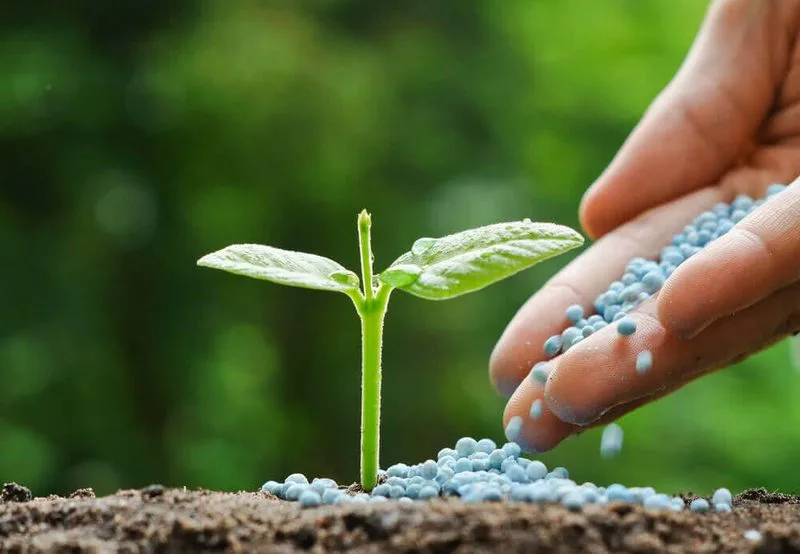
Nutrient-rich soil is essential for cucamelons to flourish. Use a balanced organic fertilizer every 4-6 weeks during the growing season.
Applying fertilizer when the plants are actively growing boosts fruit production and overall vitality. Pay attention to the instructions on your chosen fertilizer to avoid over-fertilization, which can damage the plants.
Incorporating compost into the soil before planting can also enhance nutrient availability. With proper fertilization, cucamelons will reward you with an abundant harvest.
Protect from Pests

Pests can be a challenge for any gardener, and cucamelons are no exception. Common culprits include aphids and spider mites.
Regularly inspect your plants and use insecticidal soap or neem oil as a natural deterrent if needed. Installing physical barriers like netting can also protect your cucamelons from larger pests.
Encouraging beneficial insects, such as ladybugs, can help control pest populations naturally. Taking proactive measures ensures your cucamelons stay healthy and pest-free.
Harvest at Peak Ripeness

Timing your harvest is crucial for the best flavor. Cucamelons are ready to pick when they reach about the size of a grape, but still firm to the touch.
Regular harvesting encourages the plant to produce more fruit. If left too long, cucamelons can become bitter and less palatable.
To harvest, gently twist or snip the fruit from the vine, taking care not to damage the plant. Enjoy the crisp, citrusy flavor of these tiny delights at their freshest by knowing the perfect time to pick them.
Experiment with Companion Planting

Companion planting can enhance cucamelon growth by naturally deterring pests and promoting healthy soil.
Plants like marigolds and basil are excellent companions, as they can repel unwanted insects. Integrating these into your garden can lead to a more balanced ecosystem.
This approach not only benefits cucamelons but also enhances the overall productivity of your garden. Experimenting with different companion plants can lead to surprising and rewarding results.
Prune for Better Yield
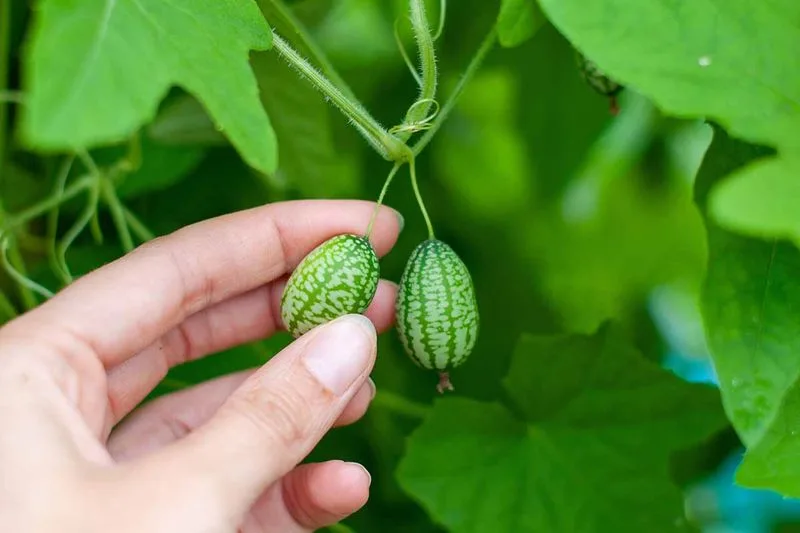
Pruning cucamelons can lead to a more fruitful harvest. Removing excess foliage increases sunlight penetration and air circulation.
Focus on trimming back any dead or overcrowded stems regularly. This encourages the plant to direct energy towards fruiting rather than foliage.
Proper pruning can improve plant health and boost fruit yield. By managing growth effectively, you’ll create an environment where cucamelons can thrive. Pruning is a simple yet powerful tool in your gardening arsenal.
Extend the Growing Season

To enjoy cucamelons beyond their natural growing season, consider using a greenhouse or cloches. These structures protect plants from cooler temperatures and extend their productive period.
Starting seeds indoors and using row covers can also jump-start the growing process. This method is particularly beneficial in regions with shorter growing seasons.
By extending the season, you can enjoy fresh cucamelons for a longer time, maximizing your garden’s output.
Use Organic Mulches
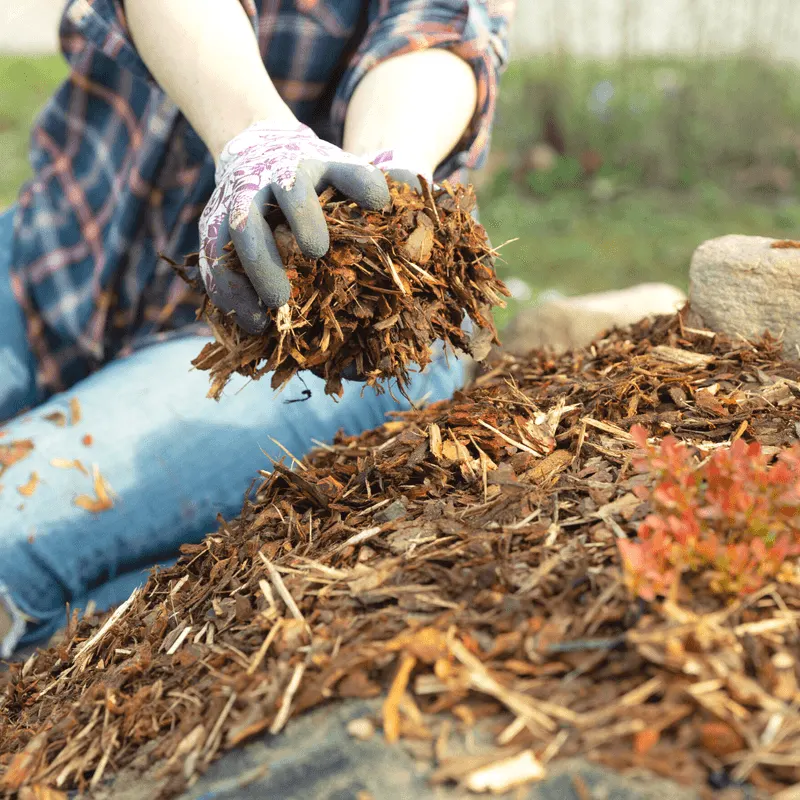
Mulching is a vital practice in maintaining healthy cucamelons. Organic mulches such as straw or wood chips help retain soil moisture and regulate temperature.
Spreading mulch around the base of plants also suppresses weeds, reducing competition for nutrients.
As the mulch breaks down, it enriches the soil with organic matter, further supporting plant health. Incorporating organic mulches not only aids in water conservation but also contributes to a thriving garden environment.
Save Seeds for Future Planting
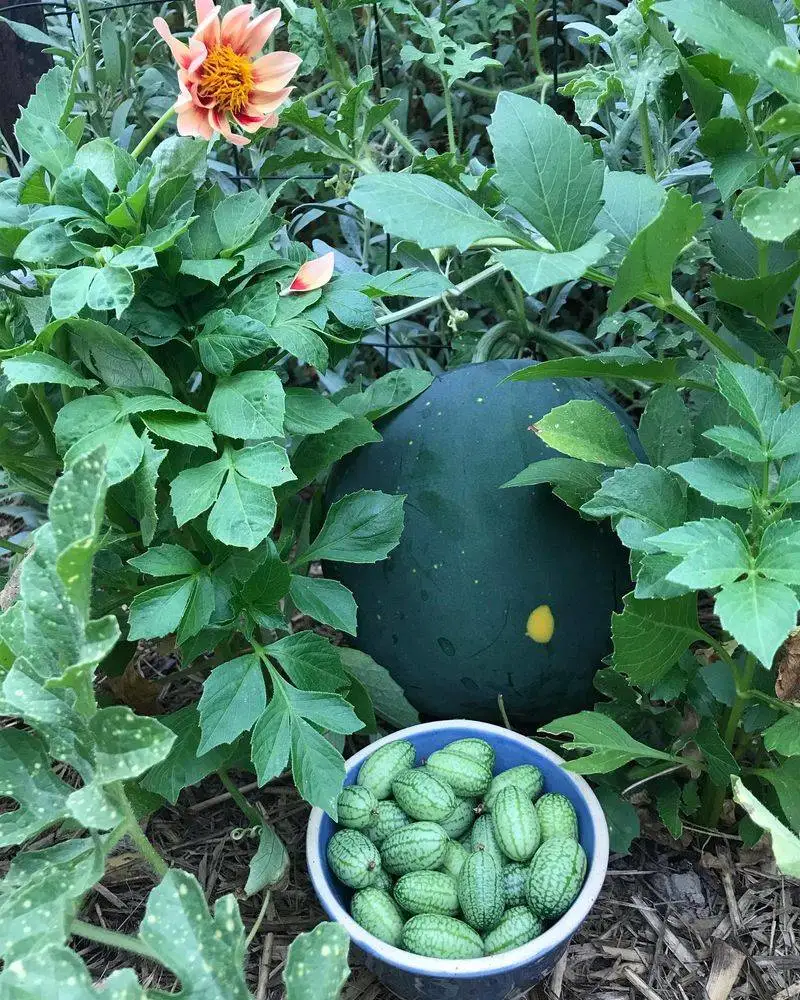
Cucamelons offer the opportunity for seed saving, ensuring a continuous supply for future plantings. Allow some fruits to mature fully on the plant until they become soft.
Harvest and scoop out the seeds, rinsing them to remove pulp. Spread them on a paper towel to dry thoroughly before storing.
By saving seeds, you can grow cucamelons adapted to your garden conditions, creating a sustainable cycle of growth and harvest.
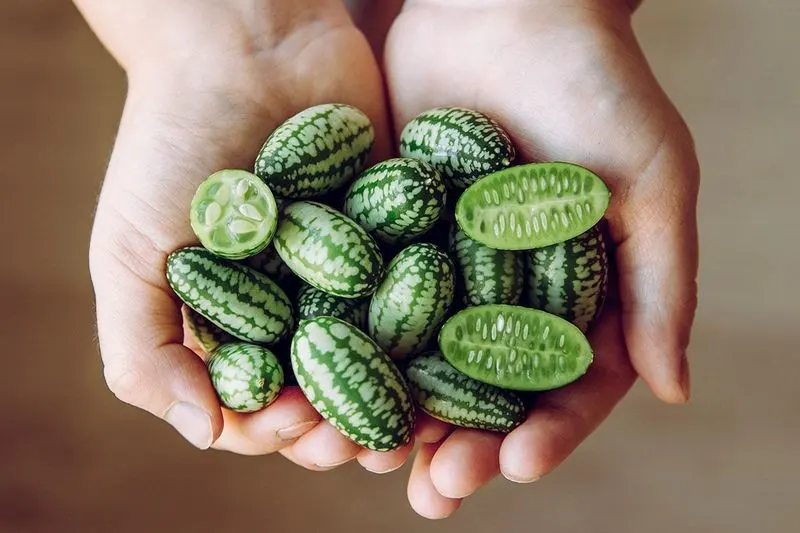
Sharing the fruits of your labor can be incredibly rewarding. Cucamelons are a unique and delightful gift for friends and family.
Consider hosting a small gathering or simply sharing a basket with neighbors. This not only spreads joy but also encourages a sense of community and shared interest in gardening.
Engaging others in your gardening journey can be as fulfilling as the harvest itself, making your cucamelon adventure even more memorable.

